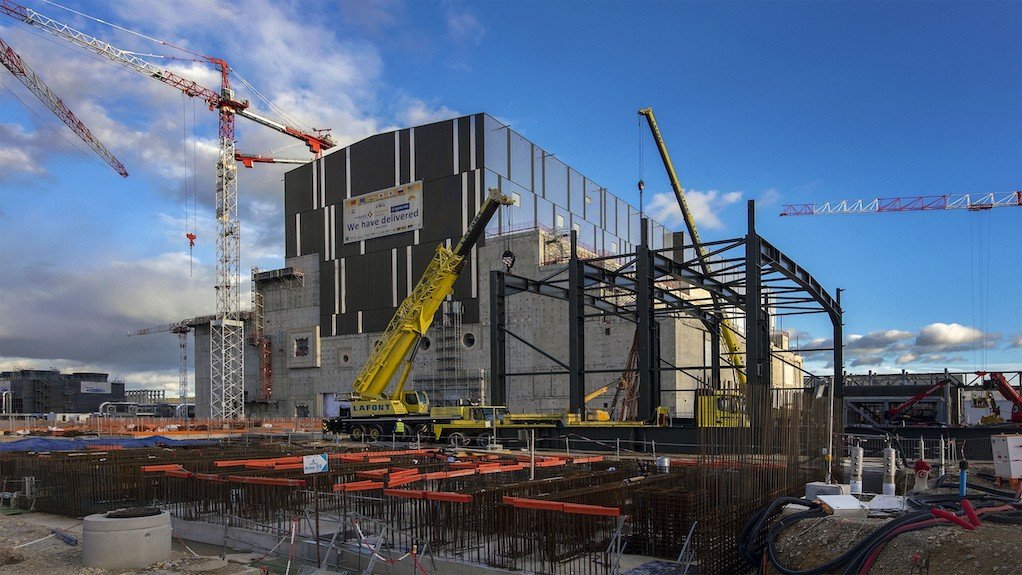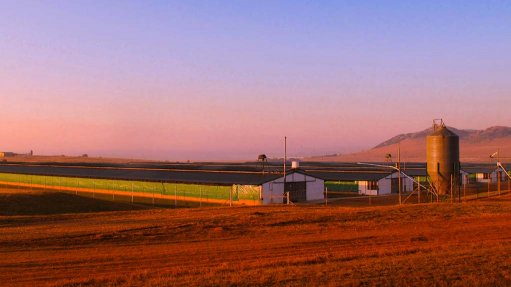International Thermonuclear Experimental Reactor project, France – update


Photo by ITER Organization
Name of the Project
International Thermonuclear Experimental Reactor (ITER) project.
Location
Cadarache, north of Marseille, southern France.
Project Owner/s
The ITER Organization, which includes China, the European Union (EU), India, Japan, Korea, Russia and the US.
Project Description
The ITER project is a large-scale scientific experiment that aims to demonstrate the feasibility of fusion as a large-scale and carbon-free source of energy.
The goal of ITER is to operate at 500 MW (for at least 400 seconds continuously), with 50 MW of plasma heating power input. No electricity will be generated at ITER.
The ITER is based on the tokamak concept of magnetic confinement, in which the plasma is contained in a doughnut-shaped vacuum vessel.
Thirty-nine buildings and technical areas house the ITER tokamak and its plant systems. The heart of the facility – the tokamak building – is a seven-storey structure in reinforced concrete that is situated 13 m below the platform level and 60 m above.
Other auxiliary buildings in the vicinity of the tokamak building include cooling towers, electrical installations, a control room, facilities for the management of waste, and the cryogenics plant that will provide liquid helium to cool the ITER magnets.
The fuel for the reactor will be a mixture of two isotopes of hydrogen, deuterium and tritium, which will be heated to temperatures higher than 150-million degrees centigrade, forming the hot plasma.
The complex will be 80 m high, 120 m long and 80 m wide. Its footprint will be bigger than that of a football stadium.
It will rely on 493 plinths, equipped with antiseismic bearings. The plinths can sustain the overall weight of the reactor – about 23 000 t – almost three times the weight of the Eiffel Tower.
The complex will host 100 heavy nuclear and confinement doors. The major doors will be 4 m high, 4 m long and 35 cm thick. Every door will be about 40 t and they will be remotely operated.
Almost 3 000 t of superconducting magnets will be connected by 200 km of superconducting cables, all kept at -269 ºC by the world’s biggest cryogenic plant.
Every building, once structurally complete, is handed over to the ITER Organization for the installation and assembly of equipment.
Potential Job Creation
An estimated 2 000 workers have participated in the construction of the ITER scientific facility.
Capital Expenditure
The project is valued at €23.6-billion. Members of the ITER Organization will bear the cost of the project through its ten-year construction phase and its 20-year operational phase before decommissioning. The project is mainly funded by the European Union (45.6%), with China, India, Japan, Korea, Russia and the US contributing 9.1% each.
Planned Start/End Date
First plasma at the ITER is planned for 2025, with deuterium/tritium fusion experiments starting in 2035.
Latest Developments
The ITER project has announced that defects have been discovered in the thermal shields and vacuum vessel sectors, and has warned that the consequences on schedule and cost "will not be insignificant".
The issue discovered with the vacuum vessel sector is that when the component's four individual segments were welded together, the "deviations from nominal dimensions were more substantial than the specified limit in different locations on the component’s outer shell".
"These dimensional nonconformities modified the geometry of the field joints where the sectors are to be welded together, thus compromising the access and operation of the bespoke automated welding tools."
Key Contracts, Suppliers and Consultants
The VFR consortium, comprising Vinci Construction Grands Projets, Razel-Bec, Dodin Campenon Bernard, Campenon Bernard Sud-Est, GTM Sud, Chantiers Modernes Sud, Ferrovial Agroman and Assystem (final design Phase 1 and prototype testing of the diverter remote handling system); QST and MHI (toroidal field coils and manufacture of six units of diverter outer vertical target components for ITER); Italian Fincantieri Consortium, comprising Fincantieri, Fincantieri SI, Delta-ti Impianti and Comes (TCC1 assembly contract); META SNC, comprising France's Ponticelli Freres SAS and Spain's Cobra Instalaciones y Servicios SA and Empresarios Agrupados Internacional (TCC2 assembly contract); NIST (preliminary predevelopment and design of the HCCB TBS); Korean Domestic Agency (vacuum vessel sector six and associated thermal shielding); and Japanese Domestic Agency (toroidal field coils – TF12 and 13); European Domestic Agency (overhead bridge cranes and the next-in-line rigging attachment); Momentum (management-as-agent contractor); DYNAMIC SNC, comprising Ansaldo Nucleare; Endel Engie; Orys Group ORTEC; SIMIC; Ansaldo Energia; and Leading Metal Mechanic Solutions SL (tokamak assembly contractor); and Foselev (metrologists).
Contact Details for Project Information
ITER Organization communications, email itercommunications@iter.org.
Comments
Announcements
What's On
Subscribe to improve your user experience...
Option 1 (equivalent of R125 a month):
Receive a weekly copy of Creamer Media's Engineering News & Mining Weekly magazine
(print copy for those in South Africa and e-magazine for those outside of South Africa)
Receive daily email newsletters
Access to full search results
Access archive of magazine back copies
Access to Projects in Progress
Access to ONE Research Report of your choice in PDF format
Option 2 (equivalent of R375 a month):
All benefits from Option 1
PLUS
Access to Creamer Media's Research Channel Africa for ALL Research Reports, in PDF format, on various industrial and mining sectors
including Electricity; Water; Energy Transition; Hydrogen; Roads, Rail and Ports; Coal; Gold; Platinum; Battery Metals; etc.
Already a subscriber?
Forgotten your password?
Receive weekly copy of Creamer Media's Engineering News & Mining Weekly magazine (print copy for those in South Africa and e-magazine for those outside of South Africa)
➕
Recieve daily email newsletters
➕
Access to full search results
➕
Access archive of magazine back copies
➕
Access to Projects in Progress
➕
Access to ONE Research Report of your choice in PDF format
RESEARCH CHANNEL AFRICA
R4500 (equivalent of R375 a month)
SUBSCRIBEAll benefits from Option 1
➕
Access to Creamer Media's Research Channel Africa for ALL Research Reports on various industrial and mining sectors, in PDF format, including on:
Electricity
➕
Water
➕
Energy Transition
➕
Hydrogen
➕
Roads, Rail and Ports
➕
Coal
➕
Gold
➕
Platinum
➕
Battery Metals
➕
etc.
Receive all benefits from Option 1 or Option 2 delivered to numerous people at your company
➕
Multiple User names and Passwords for simultaneous log-ins
➕
Intranet integration access to all in your organisation



















